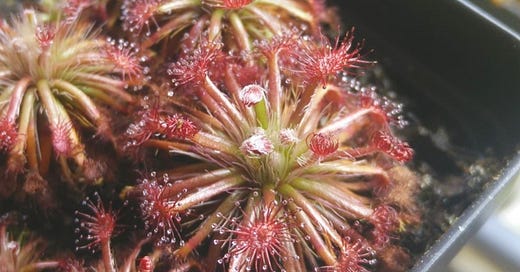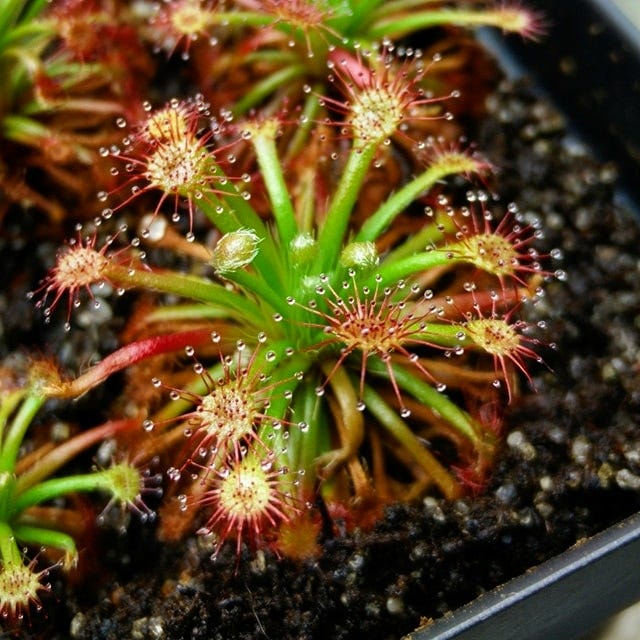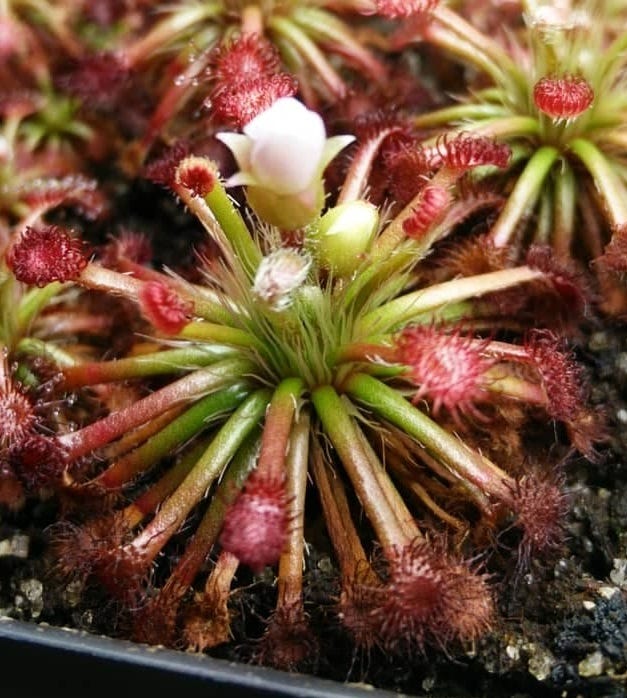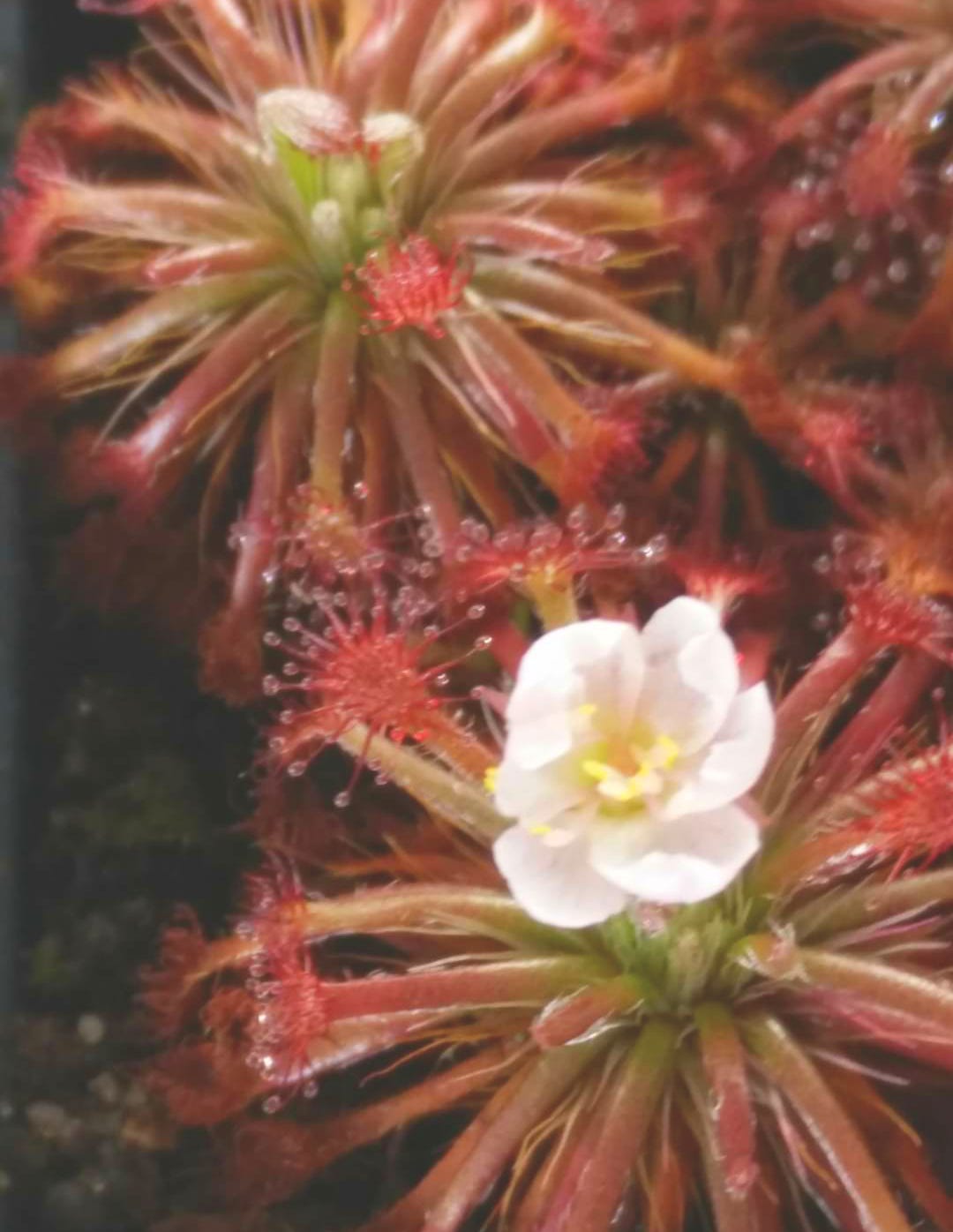SPECIES PROFILE: DROSERA SOLARIS
This small, challenging sundew is one of the best looking in the genus if grown well.
Drosera solaris is a South American sundew that, despite its diminutive size, can be breath-taking when properly cultivated. However, since this species is somewhat difficult to obtain and can be quite finicky, properly cultivated specimens are few and far between. That said, we hope this article will provide valuable information on the cultivation of this species.
Introduction
D. solaris is known only from a small plateau on Maringma Tepui in the Pakaraima mountains of Western Guyana. Here it grows in a small clearing within the Bonnetia roraimae cloud forest. Most plants are found in peaty substrates in slight shade, but other, more colorful plants can be found in full sun. D. solaris grows sympatrically with the natural hybrid of Heliamphora nutans and Heliamphora glabra.
One of the most visually striking features of D. solaris is the contrast between its yellow-green petioles and dark red lamina; no other South American Drosera possesses such coloration. However, the yellow-green petiole coloration does not begin to appear until plants have formed an approximately 1cm tall stem of dead growth. Based on the abysmally slow growth rates that I've observed, plants of this size are at least several years old.
Note: The location of D. solaris was incorrectly named as Mount Yakontipu in the species description. Sarraceniaciae of South America clarifies that the actual location it Maringma Tepui.
Temperature, Lighting, and Humidity
Though D. solaris is somewhat sensitive, all of the rules of growing highland Drosera still apply. The only difference is that D. solaris will get annoyed far more easily if you deviate from ideal conditions than, say, D. graomogolensis. My plants experience day temperatures of around 73 degrees with a night-time temperature drop of at least 15 degrees. D. solaris is susceptible to heat damage and will get quite upset if exposed to temperatures above 80 degrees for a prolonged period of time (I'm speaking from personal experience... unfortunately). In regards to lighting, plants will color up nicely when exposed to bright, direct light. However, this species is somewhat susceptible to burning if not properly acclimated first. My humidity hovers between 80% and 100%; in the past, I grew these plants in 60% humidity, and they didn't mind.
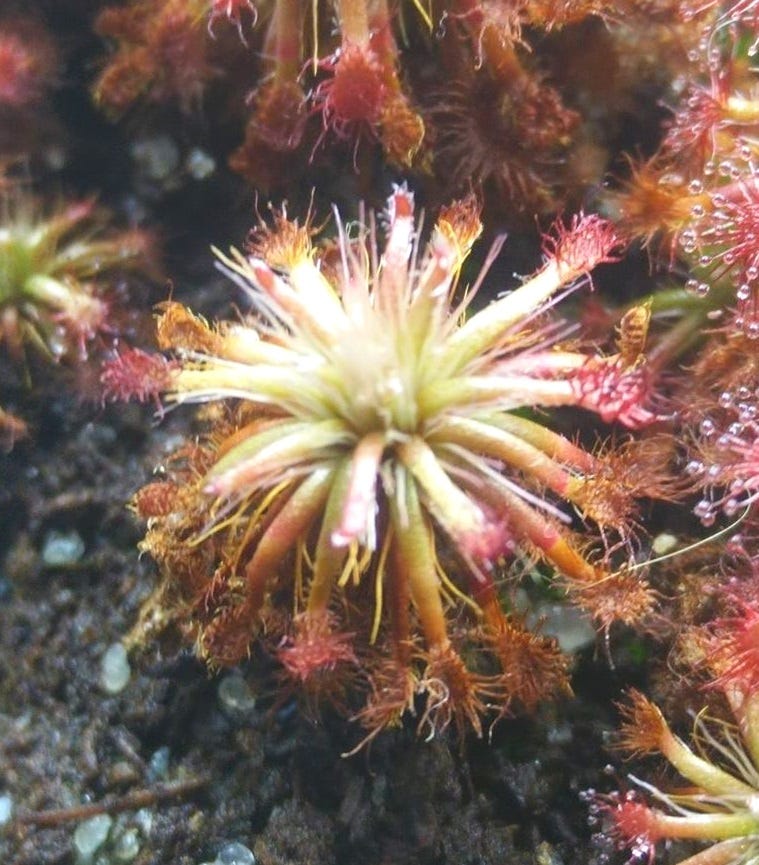
Medium, Watering, and Feeding
I have only grown D. solaris in a 1:1 peat:sand medium. Most Drosera are fine in mixes with peat or long-fibered sphagnum bases, and I have yet to hear or see anything demonstrating otherwise for D. solaris. However, due to the small size of these plants, I would not recommend using live sphagnum as they can easily be overgrown by it. For me personally, any slight aesthetic benefit that live sphagnum may add is not worth the added maintenance of keeping it in check. I keep the medium damp but not wet, allowing it to come close to drying once in awhile. While I top-water, tray watering should be fine too, so long as the roots are not sitting in water for a significant amount of time.
D. solaris will grow even slower than it usually does if not fed. Since it usually grows slower than an quadriplegic sloth, I recommend feeding this plant regularly. I use crushed fish food (beta pellets) and apply it in small amounts to around 1/3 of active leaves once or twice per month. Applying large amounts of food often leads to leaf burn.
Flowering and Reproduction
D. solaris has flowered for me on three occassions. My environmental conditions are relatively constant year-round, so I'm not sure what, if anything, triggers my plants to flower. The flowers are a very soft pink color, almost indistinguishable from being pure white. They flower stalks themselves are some of the shortest I've seen, barely rising above the plant. My first two flowers, which I did not manually pollinate, yielded no seeds. My third flower, which I did manually pollinate, yielded plenty. That said, I have heard of growers whose plants do not require assisted pollination. However, manually pollinating these flowers requires very little effort and can't hurt, so I see no reason not to do it.
I have not yet tried to reproduce this plant vegetatively, but other growers have had success with leaf cuttings. Due to the small size of this plant, removing a small segment of stem (i.e. a leaf pulling) when taking leaves should increase the probability of success; granted, it will certainly stress out the plant a bit more than normal leaf cuttings. I do not know of any growers that have had success with root cuttings. I suspect that, in addition to having a low probability of success, root cuttings would stress this already temperamental species out significantly. For that reason, I see no reason to attempt them.
Wrapping it Up
D. solaris is a great little plant that I wish was more popular in collections. It's pickier than most Drosera but isn't that difficult to grow so long as the temperature is ideal. With it's unique coloration, large stipules, and short flower stalks, it's truly a one-of-a-kind within the genus.
References
Fleischmann, A., Wistuba, A., & Robinson, A. S. (2007). Drosera solaris (Droseraceae), a new sundew from the Guayana Highlands. Willdenowia, 37(2), 551-555.
Robinson, A. S., Wistuba, A., Fleischmann, A., & Nerz, J. (2011). Sarraceniaceae of South America. Poole, Dorset: Redfern Natural History Productions.

